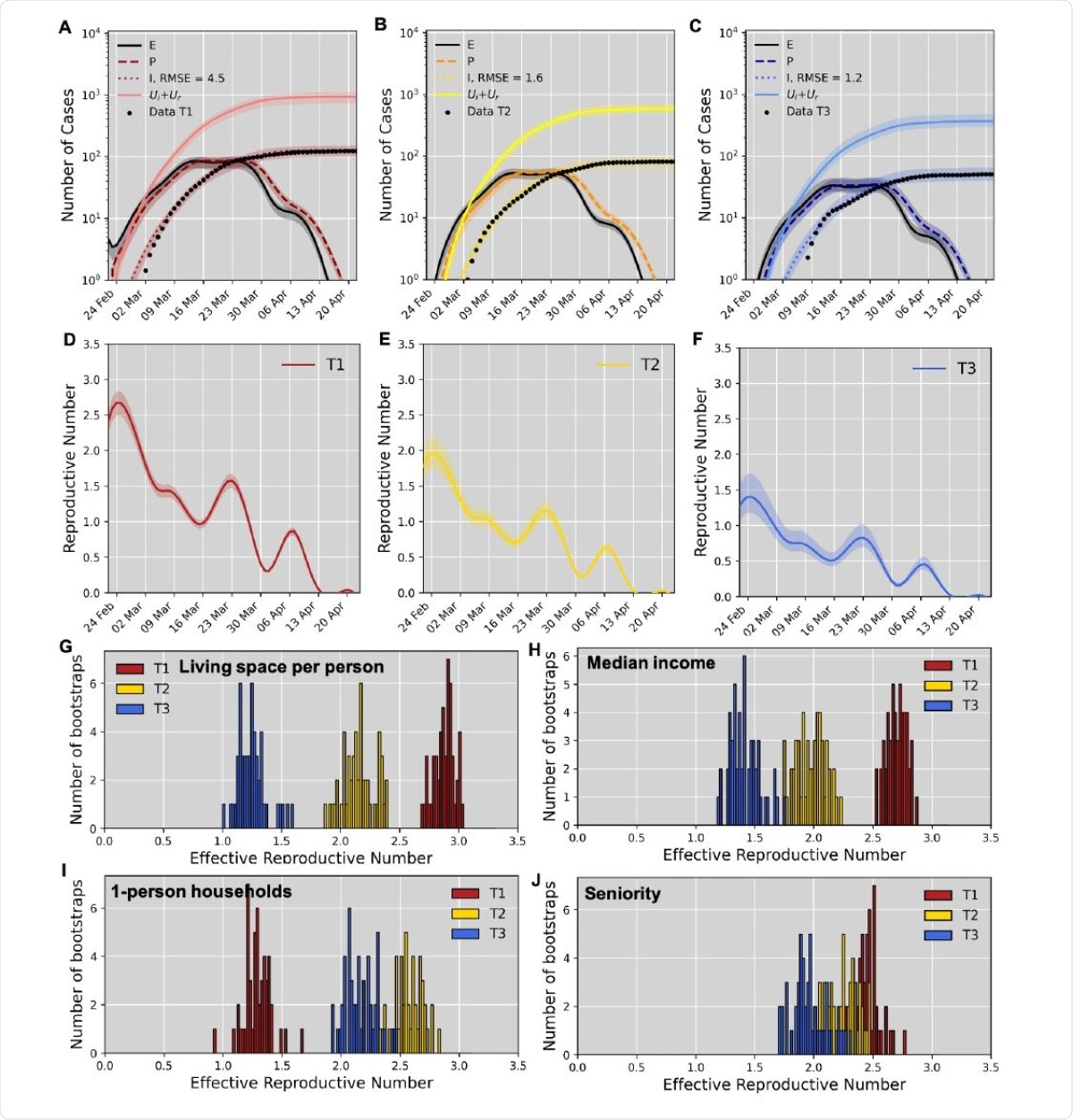Researchers in Switzerland have conducted a study showing that the transmission of severe acute respiratory syndrome coronavirus 2 (SARS-CoV-2) within cities is driven by socioeconomically weaker and high-mobility groups.
The SARS-CoV-2 virus is the agent responsible for the coronavirus disease 2019 (COVID-19) pandemic the has affected the lives of billions of people and the economy worldwide.
“Here, at very high spatio-temporal resolution, we analyzed determinants of SARS-CoV-2 transmission in a medium-sized European city,” says Adrian Egli from the University of Basel and colleagues. “We combined detailed epidemiological, mobility, and socioeconomic data-sets with whole genome sequencing during the first SARS-CoV-2 wave.”
The researchers showed that it was not the senior citizen population that drove the transmission of SARS-CoV-2 during the first wave.
Vaccinating this high risk group might temporarily reduce the number of hospitalizations and ICU admissions, says the team. However, the pandemic could be more effectively contained by prioritizing vaccination in areas where it is not possible to trace transmission chains, as is the case for mobile and socioeconomically weaker groups.
The researchers say that high-resolution city-level epidemiologic studies are crucial for understanding transmission chains and supporting vaccination distribution strategies at the municipal level.
Here, the researchers provide an example of such an analysis that may be readily translatable to other cities.
A pre-print version of the paper is available on the medRxiv* server, while the article undergoes peer review.
Efforts to cut SARS-CoV-2 transmission chains
Local interventions aiming to cut SARS-CoV-2 transmission chains within family, social and community networks are most effective when applied in well-defined infection clusters.
However, most infections are acquired from unknown sources and transmitted cryptically along the transmission chain and are the real drivers of the pandemic,” says Egli and colleagues.
Identifying the key determinants and routes of transmission at the city-level is essential to guide the planning of vaccination programmes.
For this, spatially and temporally highly resolved and diverse data are required including detailed information on transmission chains, and on determinants such as demographic, socioeconomic, and interaction patterns that influence both population mobility and social interaction behavior,” write the researchers.
To date, no studies have yet rigorously analyzed socioeconomic differences between city quarters as determinants of transmission.
The team says that an integrated model accounting for multiple factors including geographic, mobility and socioeconomic information could better into the determinants underlying transmission, compared with only focusing on transmission dynamics.
What did the current study involve?
Medium-sized cities of less than 300,000 inhabitants are home to a significant proportion (about 40%) of the urban population and, therefore, play an important part in the spread of SARS-CoV-2.
In this study, Basel City, which has a population of around 175,350 people serves as a representative example of such cities.
“As in most other European cities, urban quarters within Basel City differ in demographics, socioeconomic factors, housing structure, and mobility,” says Egli and the team.
The researchers combined detailed epidemiological, mobility, and socioeconomic datasets with whole genome sequencing data at very high spatial resolution (separation by street, river etc) and temporal (day to day) resolution for each infection case during the first pandemic wave (from 25th February 2020 until 22nd April 2020).
Of 7073 polymerase chain reaction (PCR) tests performed at University Hospital Basel and at an associated voluntary walk-in test center, 750 were positive for SARS-CoV-2 (10.6% positivity rate) and the whole genomes of 411 samples were successfully sequenced.
Data were analyzed using an ordinary differential equation (ODE) susceptible-exposed-infected recovered (SEIR) model.
“This model includes a city-wide mobility network of real-world measured data to identify routes of transmission,” says the team.
What did the study find?
The study revealed that socioeconomic brackets characterized by low median income and a smaller living space per person drove transmission in the city more than socioeconomically stronger groups.
This observation aligns with the possibility that low socioeconomic status may relate to jobs requiring higher personal contact, and compulsory mobility, which has been shown to increase the risk of infection by 76%,” writes the team.
By contrast, the senior citizen population was not found to drive transmission. Infection cases among this group were clustered, suggesting that contact tracing strategies would be effective, since transmission chains can be detected and contained.
Simulated vaccination scenarios showed that the largest reduction in infection cases would be achieved by prioritizing areas where transmission chains cannot be traced, as is the case for mobile and socioeconomically weaker groups.

Model fit to the case number time-series. A-C) Fit results for a partition based on median income. Data points are shown together with model predictions based on undisturbed data (solid lines), and fifty bootstraps from disturbed data (bands) for the different tertiles T1 (low, A), T2 (intermediate, B) and T3 (high median income, C). D-F) The dynamic variation of the effective reproductive number for each of the tertiles shown in A-C. G-J) Histograms over all bootstraps for the effective, pre-lockdown reproductive number for each socioeconomic partition. Results are shown for partitions based on living space per person (G), median income (H), share of 1-person households (I), and share of senior residents (J).
What does the team advise?
“Although vaccinating high-risk groups would reduce the number of hospitalized and ICU patients in the short term, the spread of the pandemic would be more effectively contained by vaccinating the transmission drivers,” says Egli and colleagues.
The team says the findings could provide valuable insight into how transmission dynamics could be harnessed to guide vaccination strategy.
High-resolution city-level epidemiological studies are essential for understanding factors affecting pandemic transmission chains, thereby supporting tailored public health information campaigns and vaccination distribution strategies at the municipal level,” write the researchers.
“We here provided an example of such an analysis within a European city and suggest that the findings and modelling approaches presented may be readily translated to other cities,” they conclude.